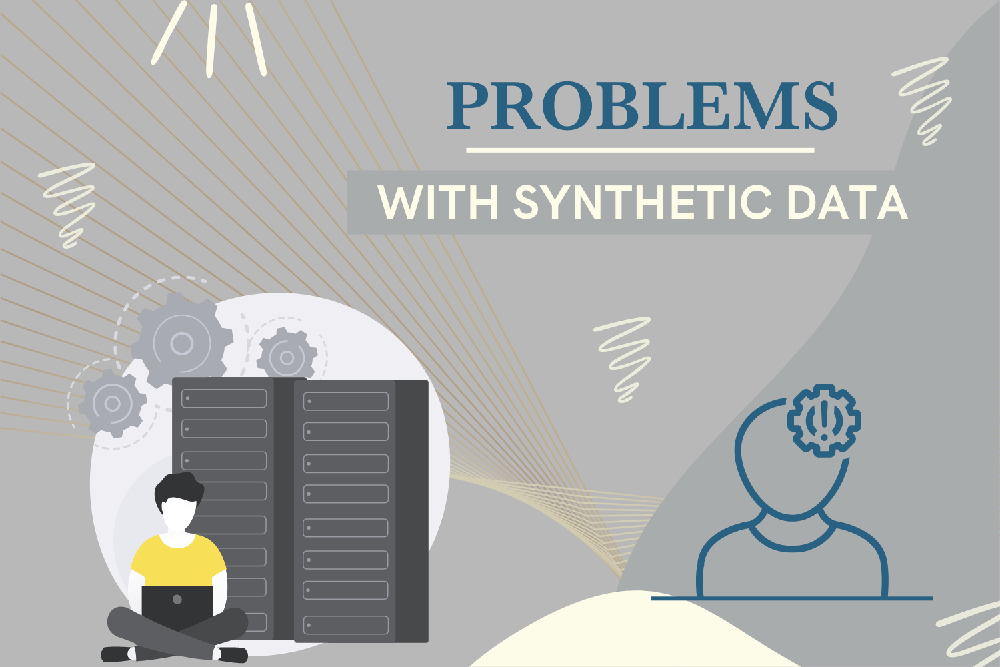Introduction
Data scientists all across the world are hungry for it. The ambition to train and deploy cutting-edge machine learning algorithms such as neural networks raise the bar for additional data. This rapidly becomes an issue when gathering fresh data is time-consuming, expensive, or just impossible. Recently, synthetic data has grown in favor as it promises to meet the demand for massive volumes of data. The ability to simply generate “false” data that can then be utilized as training data for machine learning models seems highly promising. However, one should not believe that synthetic data is the holy grail of data science, capable of solving all issues. In this article, we will see the problems with Synthetic data.
Synthetic data creation is a technique for creating artificial datapoints from a genuine dataset. The new data is designed to be so similar to the original data that the two datasets cannot be identified, not even by human domain experts or computer algorithms. More data with attributes comparable to the original can be valuable in a variety of ways. Machine learning models, for example, frequently improve in performance as more training data is given into them. More and complementary data may be generated via synthetic data, which may eventually enhance a model.
Major Challenges with Synthetic Data
- Realism requires that synthetic data correctly mirror the genuine, real-world data. However, promises of privacy protection may be required by corporate departments, customers, or auditors. It might be tough to provide accurate data that does not reveal genuine private information. However, if the synthetic data is not sufficiently precise, it will not represent the patterns that are critical to the training or testing project. Modeling attempts based on fictitious data cannot yield helpful insights.
- This problem can be exacerbated by synthetic data. The actual world is incredibly complicated and intricate. Synthetic data will not produce a “fair sample” of the real data it reflects; rather, it will exaggerate particular patterns and biases in the real world. Another consideration is that synthetic data, even if it exactly replicates real-world data distribution, cannot account for the dynamic character of the real world. Real data is always shifting and evolving, but a synthetic dataset is a “snapshot in time” that will ultimately become old.
- The most serious danger is that AI models fed by synthetic data will eventually become a closed system. They will train on biased, repetitive datasets and produce a restricted set of predictions. Those projections will become increasingly disconnected from reality, perhaps harming its users.
- ML engineers have the tools and expertise to close the “reality gap.” However, they must be aware of the issue. Synthetic datasets will not be able to effectively represent reality in many circumstances, and enterprises will have to incur the expense and complexity of obtaining genuine data. In many circumstances, an ML engineer will make the decision – do we require actual data for a certain problem, or can we settle with synthetic data?
- It is a difficult task with technological, intellectual, and ethical components. After analysing the data, the socially responsible ML engineer must assess the relevance of the problem, the impact of bias on the customer or end user, and the cost of the data to identify the best solution for the firm and its consumers. This is a new duty for ML engineering teams that will affect the lives and well-being of millions.
- While synthetic data can resemble many aspects of actual data, it cannot completely replicate the original information. When developing synthetic data, models search for general tendencies in the original data and may not cover the corner instances that the legitimate data did. This may not be a critical issue in some cases. However, in most system training circumstances, this substantially limits the system’s capabilities and reduces output accuracy.
- Furthermore, the quality of synthetic data is strongly reliant on the model that generated it. These generative models can be very good at detecting statistical regularities in datasets, but they can also be vulnerable to statistical noise, such as adversarial perturbations. Adversarial perturbations can lead the model or network to entirely misclassify data, resulting in extremely erroneous outputs. The solution is to use real-world human-annotated data, feed it into the model, and then verify the outputs for correctness.
- Another difficulty with utilizing synthetic data is the requirement for a verification server, which is an intermediary computer that performs identical analysis on the initial data. This system is set up to evaluate and compare the outputs of authentic and generated data. This is to confirm that the system has been correctly trained and is not producing undesirable results owing to any assumptions embedded into the synthetic data.


